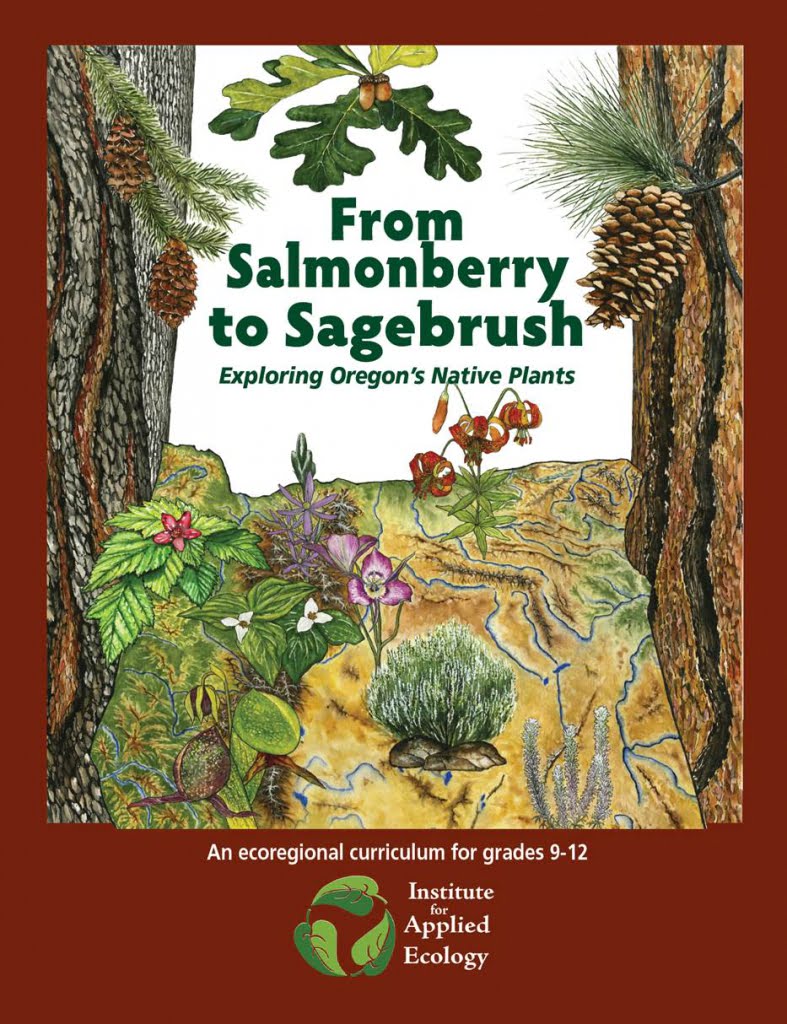
From Salmonberry to Sagebrush: Exploring Oregon’s Native Plants
$31.00
From Salmonberry to Sagebrush: Exploring Oregon’s Native Plants
© 2011 Institute for Applied Ecology. Written and compiled by Jennie Cramer and Jody Einerson.
“Botany Bouquet, The Secret Life of Flowers, and Survival Quest: A Pollinator Game,” are just a few of the interactive lessons in the Institute for Applied Ecology’s new high school ecoregional curriculum. The goal of the curriculum is to introduce students to the wondrous biodiversity of flora, and the connections between plants and their ecosystems. It is designed specifically for Oregon’s native plants and can be adapted to different ecoregions within the state.
The curriculum’s lessons encourage students to study what is outside their door and to gain skills to be informed and active citizens in local natural area issues and decision in their future. All lessons start with a “Teacher Page,” which gives background information and essential skills. “Student pages,” assist participants in developing their literacy proficiency and becoming active in service-learning and community projects. Oregon Education Standards correlated to the lessons, recommended botanical field guides for Oregon Ecoregions, schoolyard plant species lists and Oregon ethnobotanical plants and their uses, are found in the appendices.
Jody Einerson, one of the writers of the curriculum, has worked closely with teachers and an advisory council in developing the curriculum. “We are now holding free workshops to introduce educators and interested parties to the lessons and have them actually conduct some of the inquiry-based segments,” stated Mrs. Einerson. “We appreciate funding from USDA Bureau of Land Management, and National Fish and Wildlife Foundation, in making this exciting curriculum possible.” Benton County Soil and Water Conservation District has provided funding most recently for reprints of the curriculum.
16 in stock
Product Description
Curriculum Guiding Principles
Lessons build on the learning needs of the students as well as the resources of local communities.
- Place-based: The local community is the starting point for teaching concepts in science and culture; students learn about where they live
- Hands-on: Students actively use all of their senses to explore nature, stewardship, and science
- Inquiry-based: Students learn science by asking and answering questions as a guide to discovering the world around them
- Experiential: Students don’t just learn, they DO
- Service-learning: Learning activities directly benefit community, motivating students by giving extrinsic value to their work
- Aligned with Oregon State Education Standards
- Fosters community partnerships: Students forge relationships with peers and professionals by taking part in their community
- Interdisciplinary: Curriculum pieces integrate across disciplines teaching about native plants through science, math, social studies, art, and literacy
- Developed within the framework of the North American Association of Environmental Educators (NAAEE) Guidelines for Excellence: Fairness and accuracy, depth, emphasis on skills building, action orientation, instructional soundness, and usability
